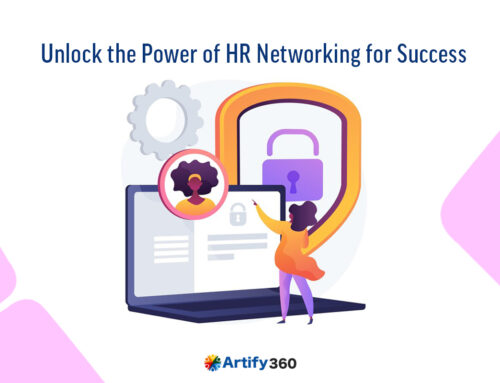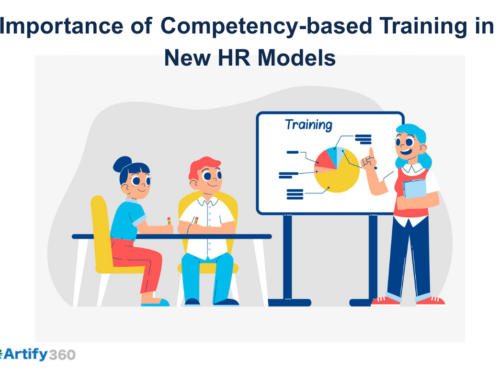In the ever-evolving business world, human resources (HR) plays a pivotal role in shaping an organization’s success. The landscape of HR is evolving rapidly, and with it comes new strategic priorities.
This article explores the top 5 strategic priorities for HR in the year ahead, providing insights into how HR professionals can adapt, innovate, and lead their organizations to thrive in the ever-changing business environment. From talent acquisition to employee engagement, these priorities are at the forefront of HR’s mission to build stronger, more resilient, and future-ready organizations.
Significance of setting strategic priorities for human resources
Setting priorities in HR management is like creating a roadmap for success. It ensures that HR professionals invest their time, energy, and resources where they matter most, ultimately contributing to the organization’s growth and long-term success.
By identifying and addressing the most critical HR challenges and opportunities, HR departments can create a more productive, engaged, and efficient workforce while minimizing risks and ensuring compliance with all relevant laws and regulations.
Here are the top 5 strategic priorities for human resources in 2024.
- Employee engagement
Employee engagement is a vital element for a thriving organization. It goes beyond mere job satisfaction and delves into employees’ emotional commitment towards their work and the company. Here’s why it’s significant and how to enhance it.
Significance of employee engagement:
- Productivity:
Engaged employees tend to be more productive. They are enthusiastic about their work and often go the extra mile to achieve company goals. - Retention:
High engagement levels are linked to better employee retention. Employees who feel engaged are less likely to leave the company, reducing recruitment and training costs. - Innovation:
Engaged employees are more likely to contribute creative ideas and innovative solutions. They feel empowered to make a difference and drive positive change. - Customer satisfaction:
Engaged employees provide better customer service. When satisfied and motivated, they deliver superior service to clients, enhancing the company’s reputation. - Teamwork:
Engagement fosters better teamwork and collaboration. Engaged employees work well with their colleagues, which leads to improved problem-solving and project success.
Ways to enhance employee engagement:
- Effective communication:
Regular, open, and honest communication from leadership helps employees feel informed and valued. - Recognition and rewards:
Recognizing and rewarding employees for their hard work and achievements boosts morale and engagement. - Opportunities for growth:
Providing opportunities for professional development and career advancement shows that the company invests in its employees’ futures. - Work-life balance:
Encouraging work-life balance and flexibility in working arrangements can reduce stress and increase engagement. - Inclusivity:
Creating an inclusive and diverse workplace fosters a sense of belonging among employees, increasing engagement. - Wellness programs:
Offering wellness programs and resources for employees’ physical and mental health can improve their satisfaction and engagement. - Feedback mechanisms:
Regular feedback and performance evaluations give employees a sense of direction and purpose.
Employee engagement is crucial for organizational success. Engaged employees are more productive, innovative, and committed to their work. Enhancing employee engagement involves creating a work environment that values employees, offers growth opportunities, and provides a healthy work-life balance.
It’s an ongoing process that requires effective leadership, open communication, and a commitment to employee wellness.
- Talent acquisition
Talent acquisition, the process of identifying, attracting, and hiring skilled individuals, is of paramount importance in the success of any organization. Here’s why it’s significant and how to enhance it.
Significance of talent acquisition:
- Competitive advantage:
Acquiring top talent gives a company a competitive edge. Skilled employees can innovate, drive growth, and outperform competitors. - Company growth:
The right hires fuel company growth. They bring fresh ideas, diverse perspectives, and the skills to expand and diversify business operations. - Productivity:
Skilled employees are more productive. They require less training and can hit the ground running, immediately contributing to the company’s goals. - Employee retention:
Employees who feel their skills are recognized and utilized effectively are more likely to stay with the company, reducing turnover and associated costs. - Innovation:
Top talent often leads to innovation. They bring new ideas and ways of doing things, driving the company forward.
Ways to enhance talent acquisition:
- Clear job descriptions:
Start by creating clear, detailed job descriptions. These help the hiring team and potential candidates understand the role and its expectations. - Effective employer branding:
Develop a strong employer brand to attract top talent. Highlight the company’s culture, values, and commitment to employee development. - Leverage technology:
Use technology, such as applicant tracking systems, to streamline the recruitment process, making it more efficient and effective. - Networking:
Build relationships with industry professionals and potential candidates to tap into a wider talent pool. - Diversity and inclusion:
Prioritize diversity and inclusion in your recruitment efforts to access a broader range of talent. - Competitive compensation:
Offer competitive salaries and benefits to attract and retain top talent. - Employee referral programs:
encourage current employees to refer candidates, as they often know individuals who would fit the company culture well. - Skills assessment:
Use skills assessments during the hiring process to ensure candidates have the necessary abilities for the role. - Behavioral Interviews:
Conduct behavioral interviews to understand candidates’ past experiences and how they handle various situations. - Onboarding:
A well-structured onboarding process ensures new hires feel welcome, understand their role, and can begin contributing quickly.
Talent acquisition is a cornerstone of any successful organization. Acquiring the right talent is vital for growth, productivity, and innovation. Enhancing talent acquisition involves clear job descriptions, effective employer branding, and leveraging technology, among other strategies. A robust talent acquisition strategy invests in the company’s future success.
- Good leadership
Good leadership is crucial for the success of an organization. Here’s why it’s significant and how to enhance it.
Significance of good leadership:
- Employee morale:
Influential leaders inspire and motivate their teams. When employees feel valued and supported, their morale increases, increasing job satisfaction. - Innovation:
Influential leaders promote a culture of innovation. They encourage employees to think creatively, take calculated risks, and contribute new ideas. - Conflict resolution:
Strong leaders are skilled at resolving conflicts. They create a harmonious work environment where disputes are addressed promptly and fairly. - Employee development:
Good leaders invest in their employees’ growth. They offer training, mentorship, and opportunities for career advancement.
Ways to enhance good leadership:
- Lead by example:
Leaders should model the behavior and work ethic they expect from their team. This builds trust and respect. - Empower others:
Encourage team members to take ownership of their work. Empowered employees are more engaged and perform better. - Flexibility:
Good leaders adapt to changing circumstances and are open to new ideas. Flexibility is key to overcoming challenges. - Conflict resolution skills:
Leaders should be trained in conflict resolution to address disputes constructively and fairly. - Emotional intelligence:
Understanding and managing emotions is vital for effective leadership. It helps build strong relationships and manage stress. - Team building:
Foster a sense of teamwork and camaraderie among employees. Team-building activities can help build strong bonds. - Continual learning:
Leaders should be committed to ongoing learning and self-improvement. This sets an example for their team. - Vision:
Share a clear vision for the organization’s future. When employees understand the big picture, they are more engaged in working toward common goals.
Good leadership is integral to a company’s success. Strong leaders create a positive and productive work environment that benefits everyone.
- Transparent communication
Transparent communication is a vital component of a healthy and thriving workplace. Here, we’ll explore why it’s so significant and provide some tips on enhancing it.
Significance of transparent communication:
- Trust building:
Transparent communication fosters trust among employees and between employees and leadership. When people feel that information is shared openly, they are more likely to trust their colleagues and superiors. - Clarity:
Transparent communication ensures that everyone understands organizational goals, processes, and expectations. This clarity reduces confusion and misunderstandings, leading to better decision-making. - Engagement:
Employees who are well-informed about company matters tend to be more engaged. They feel like valued contributors to the organization, which can boost morale and productivity. - Problem-solving:
Transparent communication is essential for identifying and addressing problems. Issues can be tackled promptly and effectively when they are out in the open. - Innovation:
An atmosphere of open communication encourages employees to share ideas and collaborate. This can lead to innovative solutions and improvements.
Ways to enhance transparent communication:
- Regular updates:
Implement a schedule for sharing updates through team meetings, email newsletters, or an internal communication platform. Keep employees informed about company news and changes. - Open-door policy:
Encourage employees to voice their concerns, questions, and suggestions. Ensure that management is accessible and responsive. - Honesty:
Be straightforward and honest in all communications. If there are challenges or setbacks, share them openly, along with the plans for resolution. - Two-way communication:
Create channels for feedback and dialogue. Don’t just talk to employees; listen to them as well. Acknowledge their input and take action when necessary. - Transparency in decision-making:
Explain the rationale behind important decisions. This helps employees understand the bigger picture and builds trust. - Use technology:
Leverage digital tools for communication, like HR software, to facilitate information sharing and collaboration. - Celebrate successes:
Recognize and celebrate achievements, both big and small. This reinforces positive communication and motivates employees. - Consistency:
Maintain a consistent communication style and frequency. Employees should know what to expect and when to expect it.
- Employee well being
Employee wellness is a critical aspect of a successful organization. It not only benefits the employees but also significantly impacts the overall productivity and health of the business. Here, we’ll explore its significance and how to enhance it.
Significance of employee wellness:
- Improved performance:
Employees who feel physically and mentally well are likely to perform at their best. They have the energy and focus necessary to excel in their roles. - Reduced absenteeism:
Prioritizing wellness can lead to lower absenteeism rates. When employees are healthy, they are less likely to take sick days. - Enhanced job satisfaction:
Focusing on wellness sends employees a message that their health and happiness matter. This can lead to increased job satisfaction and reduced turnover. - Positive workplace culture:
The culture that supports wellness creates a positive and supportive atmosphere. Employees feel valued and supported, which can lead to better teamwork and collaboration. - Stress reduction:
Wellness programs often include stress management tools. This can result in reduced stress levels, which is good for the employees and the overall work environment.
Ways to enhance employee wellness:
- Wellness programs:
Implement wellness initiatives such as fitness challenges, nutrition workshops, and mental health resources. Encourage employees to take advantage of these programs. - Work-life balance:
Promote a healthy work-life balance. Encourage employees to take breaks and vacations and avoid overworking. - Mental health support:
Offer access to mental health resources and counseling. Make it clear that seeking help for mental health concerns is supported and encouraged. - Physical health:
Provide opportunities for physical activity during the workday. This could include exercise breaks, walking meetings, or on-site fitness facilities. - Flexible work arrangements:
Consider flexible work options such as remote work or flexible hours, which can help employees manage their personal and professional lives. - Supportive leadership:
Train managers to recognize signs of stress or burnout and support affected employees. Leadership should also model work-life balance. - Recognition and appreciation:
Acknowledge and appreciate employees for their hard work and contributions. This recognition can boost morale and wellness. - Healthy work environment:
Ensure the workplace is physically and mentally healthy. This includes ergonomic workstations, clean air, and supportive policies against harassment or discrimination. - Wellness education:
Provide resources and educational materials on stress management, nutrition, and mental health.
Utilize Artify360 for efficient human resource operations
Artify360 HR software is a powerful tool designed to streamline and enhance business human resource operations. Its user-friendly interface and comprehensive features make it an invaluable asset for companies of all sizes.
Artify360 is a comprehensive solution that makes HR processes more efficient and supports decision-making with its data-driven insights. Whether it’s managing employee records, payroll, recruitment, or performance, Artify360 simplifies operations, making it an ideal choice for businesses looking to optimize their strategic human resource functions.







